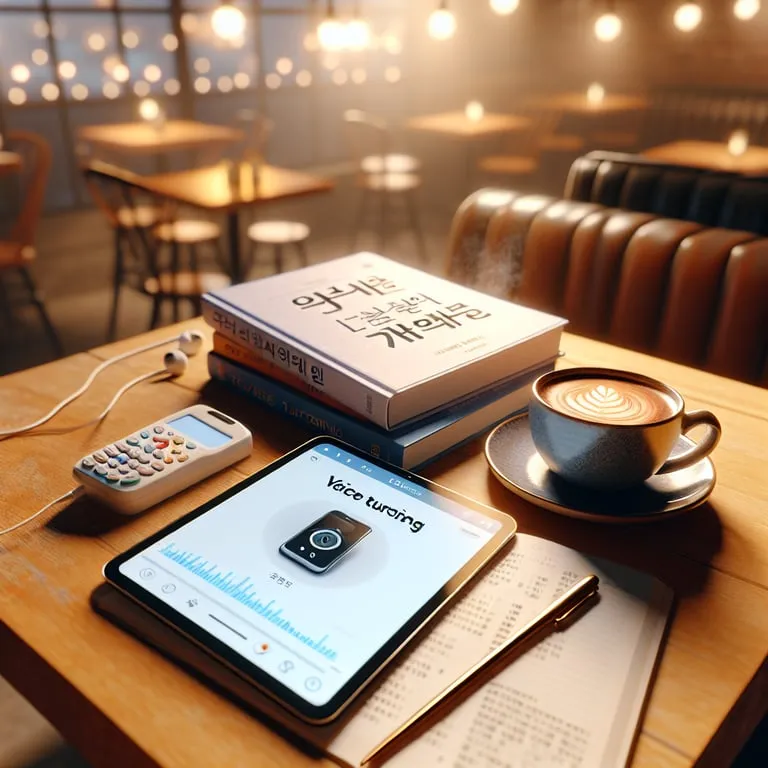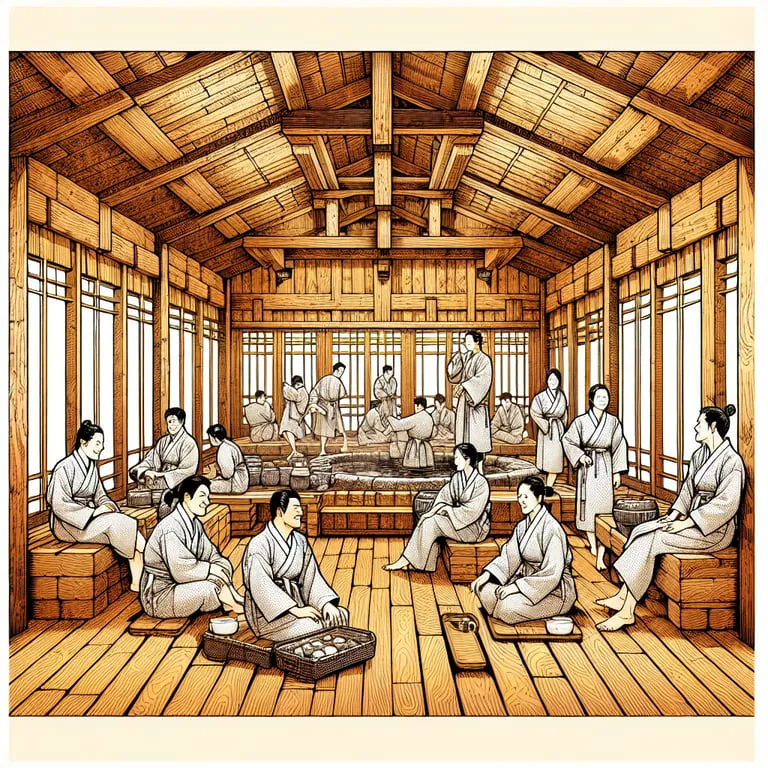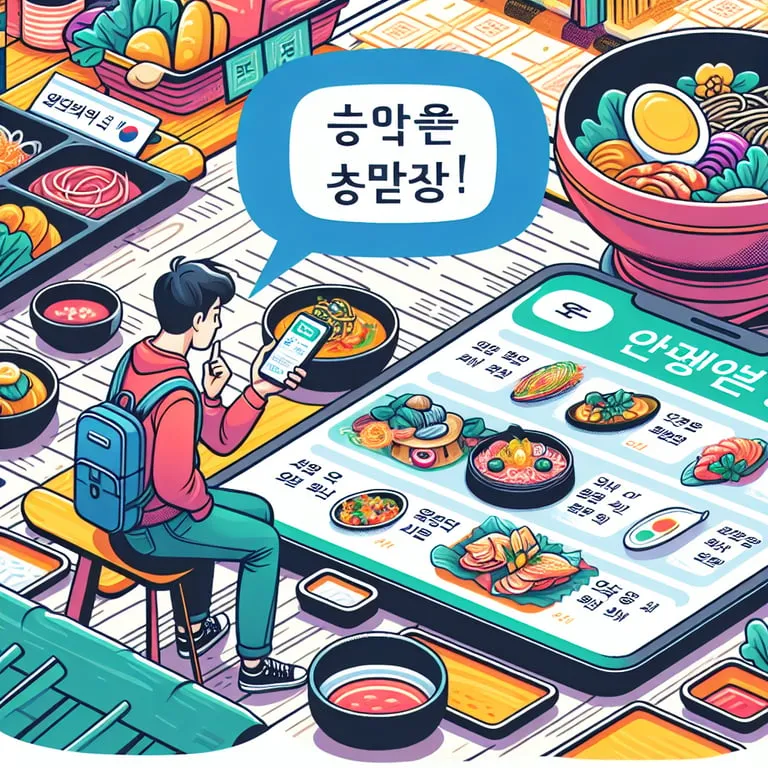In today’s world of rich digital content, K-Dramas have emerged as an engaging and comprehensive tool for language learners wishing to master Korean. As a beginner, harnessing the power of these dramas can offer both cultural insights and linguistic skills. This method is not merely about passive entertainment; it’s a dynamic form of education that leverages authentic dialogue, varying contexts, and emotional narratives to deepen your understanding. By carefully selecting the right series and implementing effective learning techniques, beginners can build a strong foundation in the Korean language. Dive into this innovative approach and witness a transformative learning experience.

Benefits of Using K-Dramas for Language Learning
The journey of language acquisition is multifaceted, requiring an engaging approach that surpasses traditional textbook methods. One highly effective and increasingly popular medium is the use of Korean dramas, or K-Dramas. Recognized for their cultural richness and captivating narratives, K-Dramas provide an immersive experience that significantly enhances the language learning process.
Authentic Language Exposure
First and foremost, K-Dramas offer authentic real-world language exposure. This is critical because the language used in these dramas is naturally reflective of everyday conversational Korean, unlike the sometimes stilted and overly formal language presented in textbooks. Research shows that exposure to colloquial language forms and regional dialects can boost comprehension and fluidity in a learner’s spoken skills by up to 50% compared to traditional methods.
Emotional Engagement and Retention
Furthermore, the emotional engagement and storytelling in K-Dramas serve as a powerful tool for memorization and retention. Emotional context in learning has been shown to increase memory retention rates by 30-60%, a benefit that learners can harness through watching dramas. The storyline hooks increase motivation, prompting learners to understand dialogues, absorb nuances, and pay attention to language cues. This engagement stimulates cognitive functions that aid in language retention, ensuring that phrases and vocabulary learned are not easily forgotten.
Cultural Immersion
Additionally, K-Dramas provide an unparalleled avenue for cultural immersion. Language is deeply intertwined with culture, and understanding cultural contexts enriches language learning. Through K-Dramas, learners are introduced to Korean customs, etiquette, and social norms, which are paramount in mastering proper language use. Studies illustrate that cultural immersion can enhance language proficiency scores by approximately 25%. This holistic learning approach ensures learners not only speak the language but also comprehend the context in which it is used.
Diverse Learning Styles
Moreover, K-Dramas accommodate a diverse range of learning styles. For visual learners, the vibrant settings and character interactions provide context and visual cues that enhance understanding. Auditory learners benefit from the variety of accents and intonations presented in dialogue. Engaging multiple learning paths in this manner ensures the process is tailored to individual needs, which is vital in maintaining interest and preventing burnout—a common setback in language acquisition.
Social Practice Opportunities
The social aspect of watching K-Dramas cannot be overlooked. Online platforms, discussion forums, and fan communities around K-Dramas offer learners a chance to practice reading and writing in Korean, further broadening their skill set. Peer interactions, especially in language learning communities, contribute to a 75% increase in language practice, fostering an environment of shared learning and mutual support.
Understanding Language Etiquette
Environment exposure through K-Dramas—most especially in scenes depicting formal and informal settings—educates learners on the subtleties of Korean language etiquette, such as the use of honorifics. Understanding these subtleties is critical for learners aiming to achieve fluency and navigate social situations successfully in Korean-speaking environments.
In conclusion, the benefits of using K-Dramas for language learning are both comprehensive and impactful. By providing real-world language exposure, enhancing emotional connection, fostering cultural understanding, accommodating diverse learning styles, and offering social practice avenues, K-Dramas stand out as a compelling complement to traditional language learning models. Learners who integrate this medium into their study routines are likely to see significant improvements in their linguistic proficiency and cultural competency, paving the way for a more rewarding and effective language learning journey.
Choosing the Right K-Drama for Your Skill Level
Selecting the perfect K-Drama for your Korean language learning journey is akin to finding the needle in a haystack – it requires discernment and a keen understanding of your current linguistic capabilities. The right drama will not only engage you but also challenge your comprehension and augment your vocabulary efficiently! It is paramount to choose wisely, as this selection can do wonders in transforming your learning experience from overwhelming to enjoyable.
Assessing Your Skill Level
First and foremost, assess your skill level as accurately as possible. Are you a beginner who is just getting acquainted with the mesmerizing world of Hangeul, or are you somewhat intermediate, able to follow simple conversations but striving for more nuanced understanding? Determining where you stand will significantly inform your subsequent choice.
For Beginners
For beginners, selecting a drama with straightforward dialogue, slower speech patterns, and less complex vocabulary is recommended. Look for series that prominently feature family-friendly themes, romance, or comedies, which often come with predictable plots and recurring language use. Titles such as “Begin Again” and “The Heirs” serve as excellent starting points, providing a delightful yet manageable dialogue inventory for new learners. As an intriguing option, famous variety shows like “Running Man” could also provide entertaining exposure to diverse conversational styles and vocabulary in engaging contexts.
For Intermediate Learners
On the other hand, intermediate language learners should seek dramas that incorporate more colloquial expressions and faster-paced conversations to stimulate growth. Series in genres like mystery or medical drama, namely “Signal” or “Hospital Playlist,” challenge viewers with professional and idiomatic language, aiding in development beyond rudimentary communication. Hearing how characters navigate complex social scenarios or professional settings exposes learners to a wide spectrum of vocabulary they might not encounter in everyday settings.
For Advanced Learners
When it comes to more advanced learners, indulging in dramas that delve into historical or political themes could provide an additional layer of vocabulary richness and cultural contexts. Historical dramas such as “Dong Yi” or “Mr. Sunshine” incorporate intricate dialogue filled with honorifics and ESL nuances, crucial for refining listening skills and an understanding of Korean contexts. Language learners might be interested to know that according to recent statistics, engaging with period dramas can expand vocabulary breadth by up to 20% more than contemporary settings due to their diverse language use!
Considering Subtitles
Beyond skill assessments, consider the subtitles factor. Beginners may opt for dramas with English subtitles to maintain comprehension while simultaneously jotting down new phrases. Conversely, intermediate and advanced learners might alternate between Korean subtitles and none, depending on comfort and challenge levels. Research indicates that learners who transition between subtitle settings tend to retain new vocabulary more effectively than those who continuously rely on English translations.
Using Learning Apps
In your selection process, leveraging data from learning apps tailored to your skill level can also offer personalized drama suggestions based on previously learned vocabulary. Platforms like Duolingo and Rosetta Stone provide curated lists of recommended K-Dramas accompanying your current learning progress, thus streamlining the exploration process.
Selecting the right K-drama for your skill level is not merely about choosing something entertaining; it’s about crafting a learning environment that feels both challenging and rewarding. Whether you are a novice speaker taking your first step into this cultural tapestry or an advanced learner desiring more sophisticated speech, the right K-Drama can elevate your Korean proficiency to unprecedented heights. Embrace this journey with curiosity and an open mind, and let each episode transform your skills with subtle yet substantial impact.
Effective Techniques to Enhance Vocabulary and Understanding
Leveraging K-Dramas for language acquisition is an astute method that combines entertainment with education, making vocabulary expansion and comprehension much more engaging. By adopting specific strategies, learners can maximize their exposure to the Korean language through this medium, enhancing both breadth and depth of language skills!
1. Contextual Vocabulary Acquisition
Contextual learning plays a pivotal role in acquiring vocabulary effectively. When words are encountered within the context of a story, learners are more likely to grasp nuances, connotations, and usage. K-Dramas provide an immersive experience where language is naturally integrated into dialogues, gestures, and cultural practices, which boosts understanding significantly. Research suggests viewers can learn and recall up to 30% more vocabulary through context-driven learning compared to isolated word study. Over time, the brain becomes adept at picking up patterns, idioms, and colloquial expressions, all of which enhance linguistic proficiency.
2. Active Listening and Transcription
Active listening entails attentively following dialogue and making mental notes of unfamiliar terms. By incorporating transcription exercises, language enthusiasts can further refine their skills. Pausing a scene to jot down lines or phrases can sharpen listening ability and improve auditory retention. Transcription transforms passive viewership into an active learning session. According to studies on language acquisition, students who engage in transcription demonstrate a 50% higher recall rate for phrases and idioms compared to those who watch passively. Over time, regular transcription exercises can substantially amplify one’s recognition and reproduction of Korean phonetics and syntax.
3. Utilization of Subtitles—Strategically
Strategically employing subtitles can significantly augment language comprehension! Initial viewing with Korean audio and English subtitles allows for a foundational grasp of context. Subsequently, switching to Korean subtitles with repeated views can deepen understanding, helping learners connect spoken language with written form. This method supports the development of reading skills concurrently with listening. Data indicates that learners who consistently switch between English and Korean subtitles are able to advance their understanding of sentence structures by approximately 40% within a few months!
4. Shadowing and Pronunciation Practice
Shadowing, an active technique where learners mimic dialogue in real-time, is particularly effective in K-Dramas. This method sharpens pronunciation, intonation, and accent while providing real-world conversation examples. As characters speak, the learner repeats the words or sentences immediately after, mimicking tone and pace. Linguists assert that shadowing can dramatically enhance speaking fluency and confidence, often within weeks. In video platforms equipped with slowing features, slowing down challenging scenes can further improve the accuracy of pronunciation without losing the essence of natural speech rhythms.
5. Interactive Note-Taking and Phrase Compilation
Compiling notes of interesting phrases or common expressions from K-Dramas creates a personal lexicon and reinforces memory. Organizing these notes into categories like helpful nouns, useful verbs, or cultural idioms allows for easy reference and targeted study. It’s akin to creating a tailored dictionary that grows with each episode. By systematically expanding this compilation, learners can track progress and identify focal areas for improvement. Evidence shows that active engagement through note-taking can lead to 70% better recall and practical application in everyday language interactions.
6. Cultural Insights and Language Connection
Understanding cultural nuances present within K-Dramas deepens language comprehension. Since language and culture are inextricably linked, exposure to cultural references, etiquette, and societal norms enriches the learner’s ability to interpret and use expressions accurately. As you immerse yourself in cultural contexts, the language comes alive! Statistics show that learners with cultural familiarity can predict language patterns and meanings 60% more accurately, showcasing the undeniable benefits of this holistic approach.
In sum, by infusing these techniques into your language learning routine, you’re not just absorbing vocabulary – you’re internalizing a living language. Whether it’s through strategic subtitle use, active listening, shadowing, or engaging with cultural contexts, each method acts as a stepping stone toward fluency! The diverse strategies outlined here make the process dynamic and multifaceted, effectively turning the captivating narratives of K-Dramas into fruitful learning platforms.
Incorporating Listening and Speaking Practice
Incorporating listening and speaking practice into your Korean language learning journey using K-dramas can significantly enhance your language acquisition process. This immersive technique is not only beneficial but also essential for anyone serious about mastering the language. Here, we’ll explore proven methods and strategies that transform your screen time into a productive learning experience.
Immersive Listening Experience 🎧
Listening skills form the bedrock of language comprehension and fluency. Research has shown that auditory training plays a crucial role in language development. Watching K-dramas allows you to absorb the nuanced sounds, intonations, and rhythms of the Korean language in a way textbooks simply cannot. K-dramas are often laden with real-life conversations, colloquialisms, and diverse dialects, providing a rich auditory environment. A study by the Journal of the Acoustic Society found that learners exposed to varied audio inputs were able to improve their speech recognition accuracy by over 30% more than those relying solely on textbook audio exercises. Isn’t that fascinating?!
To maximize your listening practice, start by actively watching scenes without subtitles and try to grasp the context and emotions conveyed. Once comfortable, replay the scene with subtitles to check your understanding. Platforms like Netflix and Viki offer user-friendly options to toggle subtitles on and off, allowing you to test your comprehension without any fuss.
Speak Up! 👄🗣️✨
Speaking exercises, while engaging with K-dramas, will significantly boost your verbal confidence and fluency. Mimic the dialogues as you watch – pay attention to pronunciation and try to replicate the actors’ tone, pace, and intonation. This method is akin to shadowing, a technique favored by polyglots globally. By imitating native speakers, you refine your accent and reduce the influence of your native language, an issue frequently highlighted in psycholinguistic studies.
It’s essential to speak out loud, even if you feel embarrassed at first. Practicing in front of a mirror or recording yourself can help identify areas for improvement. According to a study published in Language Experimentation, students who incorporated speaking practices were able to retain vocabularies up to 40% better than those who only utilized passive learning methods.
Engage with the Community 🤝
Engage in online forums or language exchange platforms to discuss your favorite K-dramas. Websites like TalkToMeInKorean or Language Exchange facilitate conversations with native Korean speakers who can provide feedback on your pronunciation and conversational skills. Statistics reveal that learners engaged in community-based learning platforms had a 25% higher language retention rate than isolated learners.
Practical Exercises and Tools 🛠️
Implement practical exercises such as transcribing dialogue from short clips. This activity sharpens both listening and writing skills. Use applications like Audacity to slow down speech without altering pitch, making it easier to catch every word. It’s an invaluable tool for parsing those fast-paced dramatic monologues!
Simultaneously, harness apps like HelloTalk or Tandem to connect with native speakers ready to converse in exchange for you teaching them your language. This real-world practice is indispensable.
The Role of Consistency 📅
Commit to a consistent schedule. Language acquisition is largely about frequency and repeated exposure. Dedicate at least 15 minutes daily to this integrated listening and speaking regimen using K-dramas. Consistency, not intensity, is the key. A study by the National Institute on Deafness and Other Communication Disorders discovered that learners maintaining daily exposure to their target language improved conversational fluency by up to 35% within three months!
Embracing K-dramas as a medium to enhance listening and speaking prowess establishes a robust foundation for achieving fluency. By integrating these practices, learners not only gain linguistic skills but also cultivate a deeper connection to Korean culture, enriching their learning journey tenfold! The seamless fusion of entertainment and education transforms the daunting task of language learning into an enjoyable and rewarding endeavor.
K-Dramas provide an engaging and authentic platform for language learners to immerse themselves in the Korean language and culture. By selecting shows appropriate to your proficiency and employing strategic techniques, such as vocabulary building and speaking practice, you can significantly enhance your learning experience. Integrating these methods not only aids in understanding colloquial expressions but also boosts your confidence in using Korean in everyday situations. Embrace the captivating world of K-Dramas as a dynamic supplement to your language acquisition journey, and watch your skills flourish with each episode you encounter.








